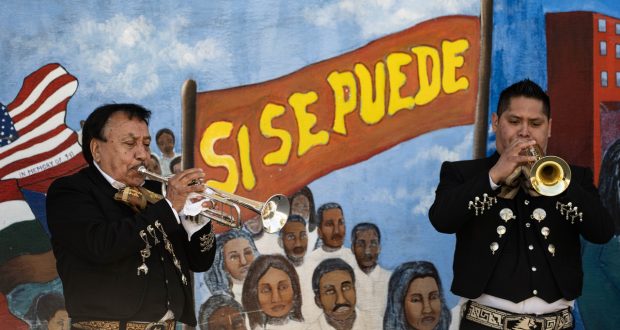By Anna Lee Mraz | Special to California Black Media Partners
The fifth of May, Cinco de Mayo, is a holiday that celebrates the Battle of Puebla, which took place in 1862 near the Mexican city of Puebla. On this day, the Mexican army, led by General Ignacio Zaragoza, defeated the French in their attempt to take over the country.
While this date is not widely celebrated in Mexico, except for perhaps in Puebla itself, it has become a popular holiday in the United States.
It’s a common misconception that Cinco de Mayo celebrates Mexico’s independence. In fact, Mexico’s Independence Day is celebrated on September 16th.
In 1867, five years after the Mexican army’s victory over the French forces at Puebla, the triumph was first celebrated in the United States, in Texas where General Zaragoza was born. Later in 1930, the Mexican consulate in Los Angeles held an official celebration that helped establish the identity of the Mexican and Latin American community in the United States.
During the 1960s and 1970s, the celebration of Cinco de Mayo gained popularity in the United States due to the efforts of the Chicano movement. This movement fought for the civil and human rights of Mexican Americans and played an important role in structuring the Civil Rights Act of 1964.
Celebrating Cinco de Mayo became a way for the Mexican American community to assert their identity and say “We, Mexicans, are here. This is us. We speak Spanish and this is how we celebrate.”
In 1980, as the Chicano movement was gaining momentum, U.S. beer companies began to market Cinco de Mayo through advertising campaigns that encouraged the community to celebrate their identity by consuming their products.
Subsequently, other companies followed suit giving a twist to the meaning of the celebration and redefining it as a celebration of Mexican culture in the United States. As a result, while Cinco de Mayo is now widely celebrated, many people who participate in the festivities are unaware of its origins.
Cinco de Mayo has evolved to become not only a celebration of Mexican culture but also a symbol of the struggle and unity of all oppressed migrant and Latino communities.
This date is typically celebrated with large festivities that feature Mexican music, traditions, art, food, and beverages.
Rubén Ábrica, mayor of East Palo Alto, pointed out in an interview with Peninsula 360 Press that during the celebrations of Cinco de Mayo “people of Mexican descent celebrate their contributions to the American society and join Latino communities affirming their culture, history, and aspirations for justice and equity for the Latinx community and for the people of the United States and around the world.”
Ábrica acknowledged that the celebration of Cinco de Mayo in East Palo Alto retains its historical significance by inspiring the community to stand up for their rights and fight “against racist oppression and inequality. These issues have caused suffering for many people, particularly those who are people of color and other vulnerable groups.
The Cinco de Mayo holiday provides an opportunity to explore themes of freedom, culture, and identity. By challenging stereotypes and rejecting one-dimensional representations of Mexican culture: tropes like Sombreros, Burros, and Huaraches.
Undoubtedly, the celebration of Cinco de Mayo has deeper roots than being a celebration where Mexican music is played, it must be more than an excuse to drink Tequila or Mezcal (but who needs one, right?), or a marketing strategy for beer companies, and where typical food is consumed.
There is more than one good reason to celebrate Cinco de Mayo this year. Acknowledging the value and importance of Mexican Heritage and learning about the rich history of Mexican people in the United States is a worthy endeavor.
Karina Alvarado from Peninsula 360 Press provided information for this article.
This California Black Media report was supported in whole or in part by funding provided by the State of California, administered by the California State Library.
 Westside Story Newspaper – Online The News of The Empire – Sharing the Quest for Excellence
Westside Story Newspaper – Online The News of The Empire – Sharing the Quest for Excellence





